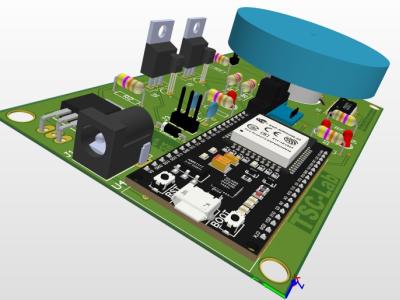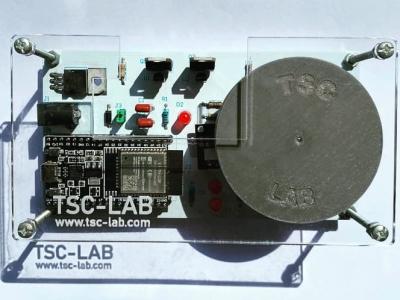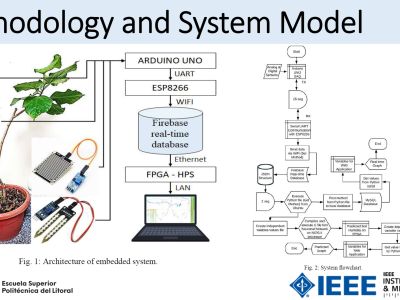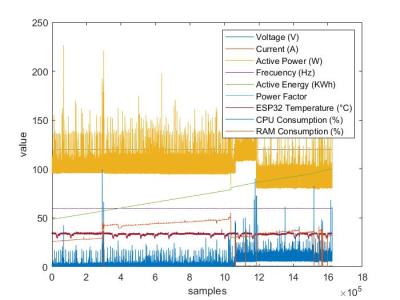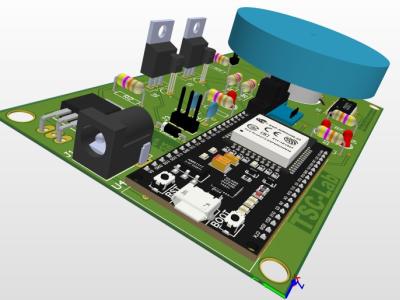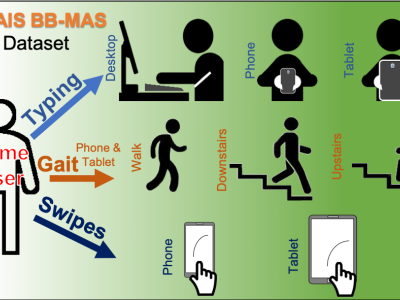Electromyography (EMG) of the Extraocular Muscles (EOM)
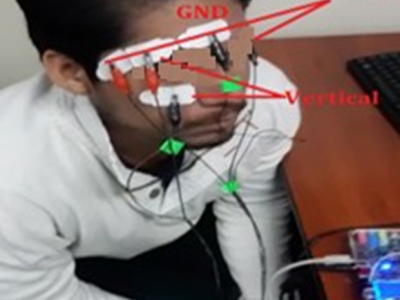
- Citation Author(s):
-
Jesús Miranda (Escuela Superior Politécnica del Litoral, ESPOL)
- Submitted by:
- Victor Asanza
- Last updated:
- DOI:
- 10.21227/bhpj-mz94
- Data Format:
- Research Article Link:
- Links:
 89308 views
89308 views
- Categories:
- Keywords:
Abstract
The electrodes are sensors capable of reading EMG signals or ocular myoelectric activity during eye movements [1]. For this purpose, two vertical electrodes and two horizontal electrodes were used, with a reference electrode on the forehead (See the figure). 10 subjects performed 10 pseudo-random repetitions of each of the following eye movements during the experiment: Up, Down, Right, Left, no movement (fixation in the center) and blinking.
The signal captured by the electrodes passes to an amplification stage through the AD620 or instrumentation amplifier which is a differential amplifier that eliminates much of the noise. After this stage, the signal is filtered with a pass band, which has been designed to allow the passage of signals that are in the range of frequencies of the muscular movement of the sight, which is between 0 and 40 Hz. . [two]. The implementation of low-pass and high-pass filters is carried out with a working frequency of 0.2Hz and 40Hz respectively, this creates a frequency window that allows reception and reading of the movements of the eye muscles. It is important to highlight that a conditioning circuit was implemented for vertical movement and another for horizontal movement. After conditioning, the signal goes to the ADC port of the FPGA card for its acquisition. [3] For data reading, a sampling frequency of 120 Hz was used for approximately 2 seconds, which by Nyquist's sampling theory is always 2.5 times the maximum of the signal to be acquired in this case the movement of the sight it is between 0 and 40 Hz [1].
The EMG signals were recorded with a data acquisition equipment with a resolution of 10 bits, that is the reason why the data is in the range of 0 - 1024. 1024 being five volts of direct current. The EMG signals were recorded with a data acquisition equipment with a resolution of 10 bits, that is the reason why the data is in the range of 0 - 1024. 1024 being five volts of direct current.
⭐ When using this resource, please cite the original publication:
GitHub:Read related topics:References:- Asanza, V., Peláez, E., Loayza, F., Mesa, I., Díaz, J., & Valarezo, E. (2018, October). EMG Signal Processing with Clustering Algorithms for motor gesture Tasks. In 2018 IEEE Third Ecuador Technical Chapters Meeting (ETCM) (pp. 1-6). IEEE
- Reaz, M. B. I., Hussain, M. S., & Mohd-Yasin, F. (2006). Techniques of EMG signal analysis: detection, processing, classification and applications. Biological procedures online, 8(1), 11-35
- V. Asanza, A. Constantine, S. Valarezo and E. Peláez, "Implementation of a Classification System of EEG Signals Based on FPGA," 2020 Seventh International Conference on eDemocracy & eGovernment (ICEDEG), Buenos Aires, Argentina, 2020, pp. 87-92, doi: 10.1109/ICEDEG48599.2020.9096752
- C. Cedeño Z., J. Cordova-Garcia, V. Asanza A., R. Ponguillo and L. Muñoz M., "k-NN-Based EMG Recognition for Gestures Communication with Limited Hardware Resources," 2019 IEEE SmartWorld, Ubiquitous Intelligence & Computing, Advanced & Trusted Computing, Scalable Computing & Communications, Cloud & Big Data Computing, Internet of People and Smart City Innovation (SmartWorld/SCALCOM/UIC/ATC/CBDCom/IOP/SCI), Leicester, United Kingdom, 2019, pp. 812-817
Instructions:
The activities carried out by each of the 10 subjects were: Up, Down, Right, Left, no movement (fixation in the center) and blinking.
The tasks were separated by folders as detailed below:
- CN - Normal Behavior
- MD - Downward Movement
- ML - Movement to the left
- MP - Blink
- MR - Right movement
- MU - Upward Movement
Each folder contains 100 .CSV files, corresponding to the 10 tasks performed by each of the 10 subjects.
These files were numbered randomly in each of the folders.
Each file contains two columns corresponding to horizontal and vertical movement. In addition, each file contains 250 endpoints corresponding to a sampling of 120 data per second during the approximately 2 seconds of task completion.


